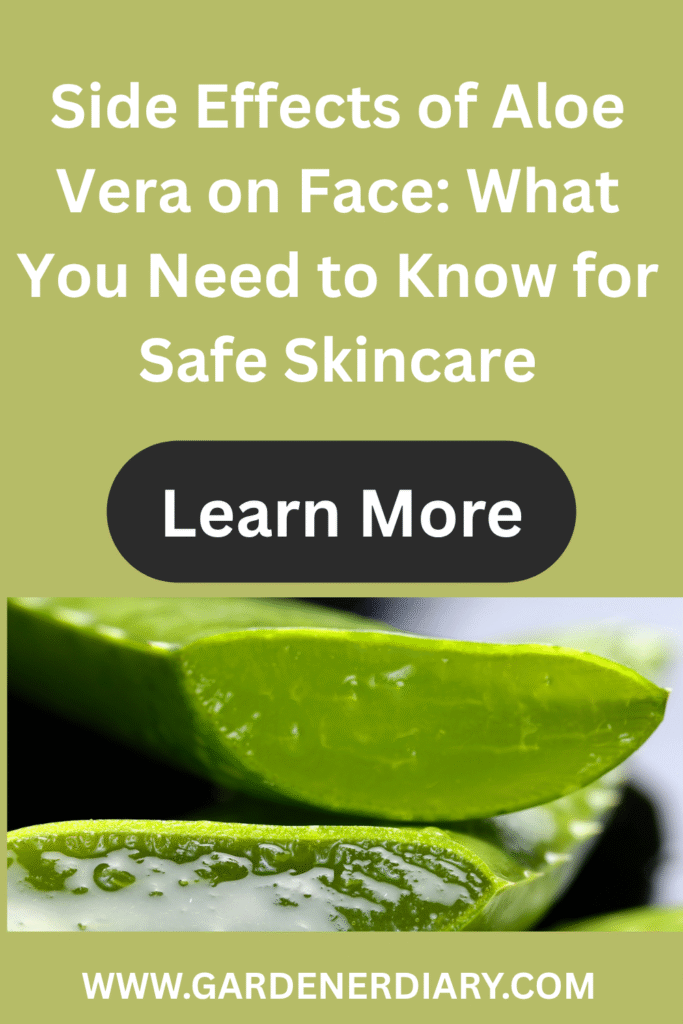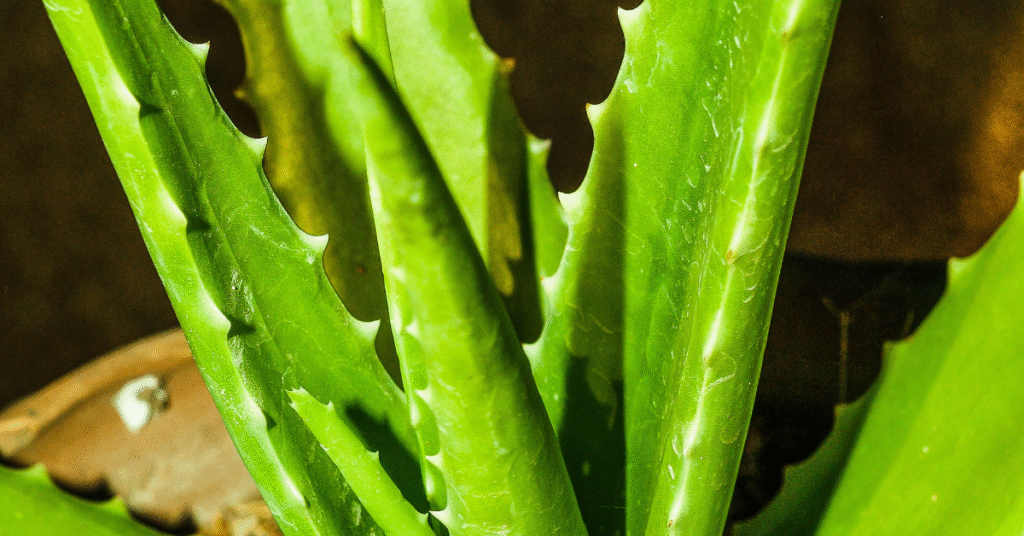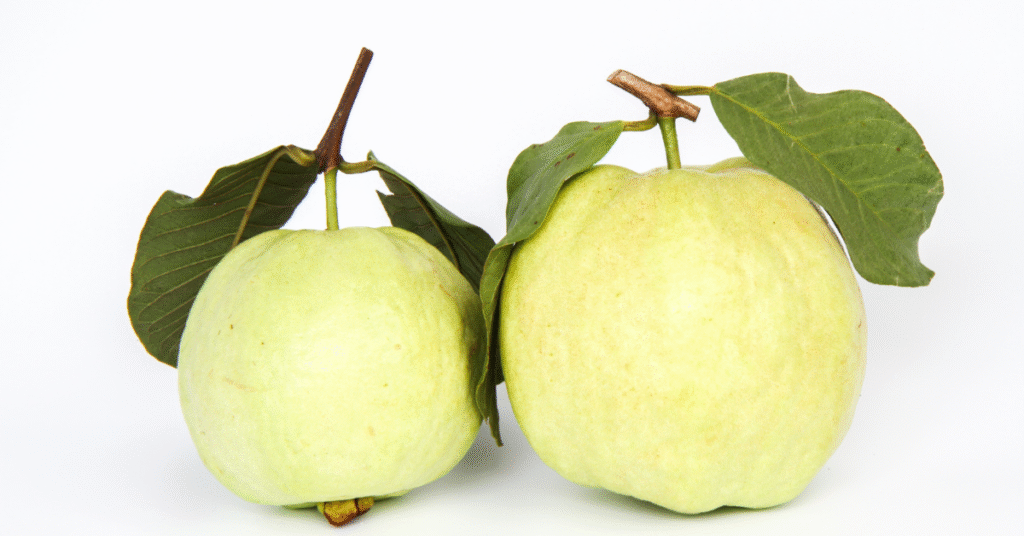Side Effects of Aloe Vera on Face: What You Need to Know for Safe Skincare
Aloe Vera, often hailed as a “miracle plant,” has been a staple in traditional medicine and modern skincare for centuries. Its clear, gelatinous pulp is packed with vitamins, enzymes, minerals, and amino acids, offering a myriad of benefits for the skin, from soothing sunburns to fighting acne. However, like any natural remedy or cosmetic ingredient, Aloe Vera is not without its potential side effects, especially when applied to the delicate skin of the face. While generally safe for most, understanding these potential adverse reactions is crucial for ensuring a positive and safe skincare experience.
This comprehensive guide will delve into the various side effects of Aloe Vera on the face, exploring their causes, symptoms, and, most importantly, how to minimize risks and use this powerful plant safely and effectively.
Understanding Aloe Vera’s Composition and Potential Irritants
The Aloe Vera leaf contains two main components: the inner clear gel and the yellowish latex layer (aloin) found just beneath the skin of the leaf.
- Aloe Gel: The clear, mucilaginous substance, rich in polysaccharides, vitamins, enzymes, and minerals, is responsible for most of Aloe Vera’s therapeutic properties. This is the part primarily used for skincare.
- Aloe Latex (Aloin): A bitter, yellowish compound found in the outer leaf layer. Aloin is a strong laxative when ingested and can be a skin irritant for some individuals, especially if not properly removed before using fresh gel.
The presence of aloin in improperly prepared fresh gel or in some commercial products (though reputable ones typically remove it) is a common culprit behind adverse reactions. Research into the pharmacological properties of Aloe Vera continues to refine our understanding of its complex composition and effects, as detailed in scientific reviews like this one on Aloe Vera’s various compounds and their actions.
Common Side Effects of Aloe Vera on Face
1. Allergic Reactions (Contact Dermatitis)
This is the most common adverse reaction. While Aloe Vera is known for soothing, some individuals can develop an allergic reaction, also known as contact dermatitis.
- Symptoms: Redness, itching, swelling, rash, hives, or small bumps on the skin where Aloe Vera was applied. In severe cases, blistering may occur.
- Causes: Sensitivity to certain compounds within the Aloe Vera plant itself, or to the aloin/latex if using improperly prepared fresh gel. It can also be an allergy to other ingredients in a commercial Aloe Vera product (e.g., preservatives, fragrances).
- Prevention: Always perform a patch test (see “How to Minimize Risks” section below).
2. Skin Irritation & Redness
Less severe than an allergic reaction, some people may experience mild irritation, redness, or a slight burning sensation upon application.
- Symptoms: Mild stinging, warmth, or temporary redness that subsides quickly.
- Causes: Very sensitive skin, application to broken or highly inflamed skin, or using fresh gel that still contains traces of aloin.
- Prevention: Start with a very small amount, dilute if using highly concentrated fresh gel, and ensure the gel is pure.
3. Dryness or Tightness
Paradoxically, while Aloe Vera is known for moisturizing, some individuals, especially those with already dry skin, might experience a feeling of dryness or tightness after application.
- Symptoms: Skin feels taut, dry, or slightly flaky after the gel has absorbed.
- Causes: Aloe Vera is primarily water-based and may not provide sufficient occlusive (barrier-forming) properties for very dry skin. If used alone without a follow-up moisturizer, it can sometimes pull moisture from the skin’s deeper layers as it evaporates.
- Prevention: Always follow Aloe Vera application with a heavier moisturizer, especially if you have dry skin. Consider combining it with a few drops of a nourishing facial oil.
4. Photosensitivity (Increased Sun Sensitivity)
Though rare, some reports suggest that certain compounds in Aloe Vera might increase skin’s sensitivity to sunlight, leading to a higher risk of sunburn or skin damage.
- Symptoms: Skin burns more easily or develops a rash after sun exposure when Aloe Vera has been applied.
- Causes: Possible interaction of certain phytochemicals in Aloe Vera with UV radiation.
- Prevention: If you use Aloe Vera on your face, especially during the day, always follow up with a broad-spectrum sunscreen. Consider using Aloe Vera primarily as a nighttime treatment.
5. Acne Breakouts (Comedogenic Effect)
While Aloe Vera is often used to treat acne due to its anti-inflammatory and antibacterial properties, in rare cases, it can cause breakouts.
- Symptoms: New pimples, whiteheads, or blackheads appearing after using Aloe Vera.
- Causes: This is highly individual. It could be due to impurities in the gel, a reaction to other ingredients in a commercial product, or simply that Aloe Vera’s film-forming properties might trap other substances on the skin, leading to clogged pores for some skin types.
- Prevention: Use pure, high-quality Aloe Vera gel. Ensure your skin is thoroughly cleansed before application. If you experience breakouts, discontinue use. For persistent acne, understanding how to treat hormonal acne naturally at home might involve a different approach.
6. Discoloration (Temporary Yellowish Tint)
If using fresh Aloe Vera gel, especially if the leaf was not properly prepared, a temporary yellowish tint might appear on the skin.
- Symptoms: A light yellow stain on the skin that washes off.
- Causes: This is due to residual aloin/latex that was not fully drained from the leaf.
- Prevention: When harvesting fresh gel, ensure you allow the yellowish latex to drain completely from the cut end of the leaf for 10-15 minutes before extracting the clear gel.
7. Interaction with Topical Medications
Aloe Vera has been shown to enhance the absorption of certain compounds through the skin. This can be beneficial but also problematic.
- Symptoms: Increased potency or unexpected side effects from other topical medications.
- Causes: Aloe Vera’s ability to act as a penetration enhancer, potentially increasing the absorption of corticosteroids or other drugs applied to the skin.
- Prevention: If you are using prescription topical medications, consult your dermatologist before incorporating Aloe Vera into your routine. Space out applications of Aloe Vera and other topical treatments.
8. Exacerbation of Existing Skin Conditions (Rare)
In very rare instances, individuals with pre-existing skin conditions like severe eczema or psoriasis might find their condition worsened by Aloe Vera, despite its general soothing properties.
- Symptoms: Increased redness, itching, flaking, or irritation in affected areas.
- Causes: Individual hypersensitivity or a reaction to specific compounds in the plant.
- Prevention: Always perform a patch test. If you have a severe or chronic skin condition, consult your dermatologist before using Aloe Vera.
9. Contamination in Commercial Products
Not all Aloe Vera products are created equal. Some commercial gels or creams may contain very little actual Aloe Vera or be contaminated with impurities.
- Symptoms: Any of the above side effects, or a lack of desired benefits.
- Causes: Poor manufacturing practices, low-quality raw materials, addition of fillers, fragrances, dyes, or preservatives that can cause irritation.
- Prevention: Choose reputable brands. Look for products that list Aloe Vera (or *Aloe Barbadensis Leaf Juice*) as the first ingredient and have a high percentage of pure gel (e.g., 99% pure). Check for certifications.
The quality and formulation of Aloe Vera products are critical. Research continues to explore the optimal formulations and innovations in skincare products containing Aloe Vera, as detailed in recent publications on its therapeutic benefits and future innovations in skincare. Further studies also delve into the dermatological applications of Aloe Vera.
10. Allergic Reactions to Other Ingredients in Formulations
Sometimes, a reaction attributed to Aloe Vera is actually caused by another ingredient in a commercial product.
- Symptoms: Similar to an Aloe Vera allergy, but specific to the sensitizing ingredient.
- Causes: Common culprits include fragrances, dyes, parabens, or other preservatives used to stabilize the product.
- Prevention: Always read the full ingredient list, especially if you have known sensitivities. Opt for fragrance-free and dye-free formulations.
11. Temporary Stickiness or Residue
While not a “side effect” in the medical sense, some users find that Aloe Vera gel can leave a slightly sticky residue on the skin, particularly if too much is applied or if the gel is not fully absorbed.
- Symptoms: Skin feels tacky or sticky to the touch.
- Causes: High concentration of polysaccharides in the gel, or applying an excessive amount.
- Prevention: Use a thin layer of gel. Allow it to absorb fully before applying other products.
12. Potential for Purging (Rare for Topical)
While more common with active ingredients like retinoids or AHAs, some individuals might experience a temporary “purging” phase when introducing new products, including natural ones. This is very rare with topical Aloe Vera.
- Symptoms: A temporary increase in breakouts as skin adjusts.
- Causes: Increased cell turnover or detoxification process, though less likely with Aloe Vera than with stronger actives.
- Prevention: Introduce new products gradually. If purging persists beyond a few weeks, discontinue use.
13. Over-Exfoliation (Indirect)
Aloe Vera contains salicylic acid, a mild exfoliant. While generally gentle, if combined with other strong exfoliants (physical scrubs, chemical peels, retinoids) or used excessively, it could contribute to over-exfoliation.
- Symptoms: Redness, sensitivity, dryness, compromised skin barrier.
- Causes: Cumulative effect of multiple exfoliating ingredients.
- Prevention: Be mindful of your overall skincare routine. If using other exfoliants, use Aloe Vera sparingly or on alternate days.
How to Minimize Risks & Use Aloe Vera Safely on Your Face
The vast majority of people use Aloe Vera on their face without any issues. By following these precautions, you can significantly reduce the risk of adverse reactions:
- 1. Perform a Patch Test: This is the most crucial step. Apply a small amount of Aloe Vera gel to an inconspicuous area of your skin (e.g., behind your ear, on your inner forearm) and wait 24-48 hours. If no redness, itching, swelling, or irritation occurs, it’s likely safe for you to use on your face.
- 2. Use Pure Gel: Opt for 100% pure Aloe Vera gel, either freshly harvested from a plant (ensuring proper preparation to remove latex) or a reputable commercial product with minimal additives.
- 3. Proper Preparation of Fresh Gel: If using fresh leaves, cut the leaf from the base and stand it upright in a cup for 10-15 minutes to allow the yellowish latex to drain out. Discard the latex. Then, cut off the green skin and scoop out only the clear inner gel.
- 4. Start Small: When introducing Aloe Vera to your facial routine, start with a small amount and apply it every other day, gradually increasing frequency if your skin tolerates it well.
- 5. Follow with Moisturizer: Especially if you have dry skin, apply a hydrating moisturizer after Aloe Vera gel to lock in moisture and prevent potential dryness.
- 6. Avoid Broken Skin: Do not apply Aloe Vera to open wounds or severely irritated skin without consulting a healthcare professional.
- 7. Store Properly: Fresh Aloe Vera gel should be stored in an airtight container in the refrigerator for up to a week. Commercial products should be stored according to manufacturer instructions.
When to Seek Medical Advice
While most reactions are mild, it’s important to know when to consult a professional:
- If you experience severe itching, swelling, blistering, or widespread rash after using Aloe Vera.
- If irritation persists or worsens despite discontinuing use.
- If you have a known allergy to plants in the Liliaceae family (e.g., garlic, onions, tulips), as you may be more susceptible to an Aloe Vera allergy.
- If you are using prescription topical medications and are concerned about interactions.
Conclusion: Informed Use for a Radiant Complexion
Aloe Vera remains an incredibly valuable natural ingredient for skincare, offering a wealth of benefits for various skin concerns. However, like all natural remedies, it’s essential to approach its use with awareness and caution. By understanding the potential side effects of Aloe Vera on the face, performing a crucial patch test, and ensuring proper preparation and application, you can harness its remarkable properties safely and effectively.
Prioritizing your skin’s unique needs and observing its reactions will empower you to make informed choices, ensuring that your journey with Aloe Vera contributes to a healthier, more radiant complexion without unwelcome surprises. Always listen to your skin, and when in doubt, consult a dermatologist.



